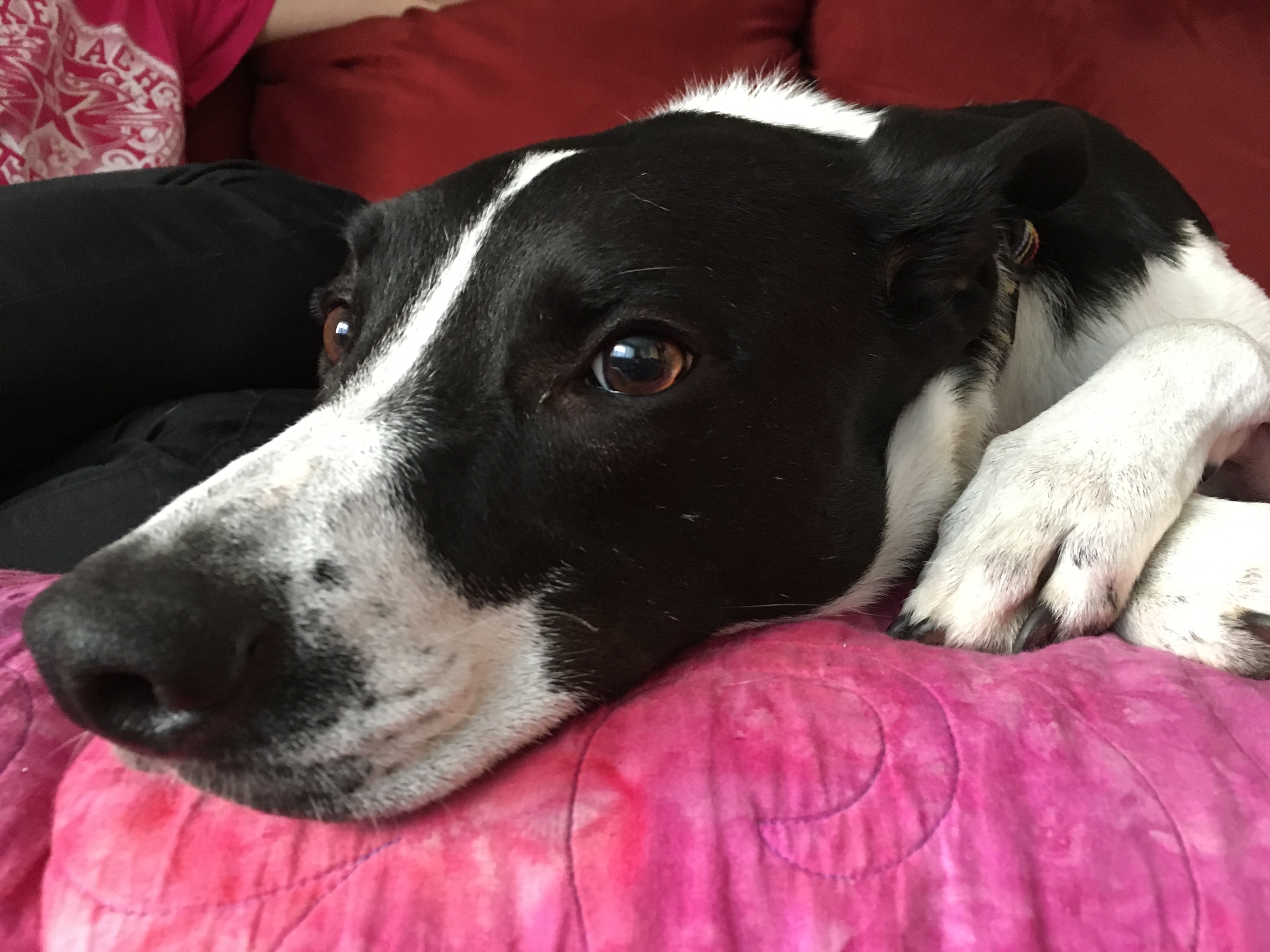Teaching a Nipping Border Collie Mix to Follow His Guardian’s Lead
By: David Codr
Published Date: April 6, 2016
Indy is a four-year-old Border Collie mix in Santa Monica who is getting more reactive to humans in certain situations; mostly when he feels that he needs to act as the protector. Indy has nipped a few people to disagree with their movements or arrivals to the home.
I took precautions before knocking on the door as I wanted to head off any potential protective reaction. I pulled out a couple of high-value meet treats and held them in my left hand so that the aroma would be the first thing Indy noticed.
As I mentioned in the above video, a good habit to get into is to have all guests remain right inside the front door allowing the dog to sniff them and waiting until it moves away before they enter. Obviously if a dog is growling or jumping up or exhibiting any sort of undesired behavior, the guardian should intercede. But teaching your guest to wait until the dog has got a chance to meet them “the dog way” can help your dog feel more comfortable with the arrival of the guests.
I also suggested that the guardian hand visitors a few high value treats when they arrive and drop them every other step once they come into the home. This will help Indy develop a positive association with new arrivals.
After going over the greeting, I sat down with Indies guardian to discuss his behavior and how I could best help. In the course of that discussion I noticed that the guardians were interacting with Indy in a way that can be confusing to the dog.
Petting a dog when it is in an unbalanced state is a common mistake that many guardians make. It’s important to remember that anytime you pet your dog, you are agreeing with whatever the dog is doing at that exact moment.
To help the guardians get into a habit of only petting Indy to reward desired behaviors, I went over a technique that I like to call Petting with a purpose.
It’s going to take Indy’s guardian a week or two before she instinctively asks him to sit, come or lay down before she pets him. But once she makes this transition, each time that she pets her dog, she will be deepening it’s respect for her as an authority figure.
Next I made some suggestions regarding the addition of structure to Indy’s daily life. Because Border Collie’s are a herding breed, they are independent thinkers and problem-solvers. If they do not recognize a clear authority figure they will often try to assume this position on their own.
One of the ways that herding dogs motivate their charges is to nip them from behind. Based on my conversation with Indy’s guardian, it’s pretty clear that his past transgressions have been a result of his attempt to control guests the same way that a herding dog would control sheep.
Before I showed her an exercise that will help the dog develop more respect for humans as well as self-control, I went over a number of things that guests can do to avoid any confrontation’s with the dog.
One of the main things would be to avoid the guest moving when the dog is not paying attention. It’s often when a dog is caught by surprise that they deliver the strongest reaction. By simply coughing or saying something loudly before they get up, they can help the dog be aware ahead of time. Moving in slower more deliberate movements and avoiding sound noises can also help while Indy is being rehabilitated.
But the best way to put a stop to Indy’s undesired behavior is for his guardian to assume the leadership role in his eyes.
One job that is generally delegated to the top dog is security for the group. Because a few of Indy’s confrontations with guest have occurred during the arrival, I wanted to show his guardian how she could take control of the area around the door before letting guests inside.
By moving the dog away from the door and keeping her authority pointed at the dog, Indy’s guardian can communicate that she does not need his assistance. The 10 feet boundary will help the dog be less reactive and also help the guest feel more comfortable. This combination will go a long ways towards eliminating Indy’s protective behavior at the door.
By the end of the session I could already see a difference in Indy. He seemed to be a little bit more respectful of his guardians personal space, was responding to their corrections and commands faster and was already starting to follow some of the rules that I had suggested.
If his guardian can continue to practice the techniques and exercises introduced in the session he should start to gravitate more towards a followers mindset. Once this is the case, he will defer to the humans rather than attempting to correct guests who move about the house or arrive unannounced.
Categorized in: Dog Behavior


